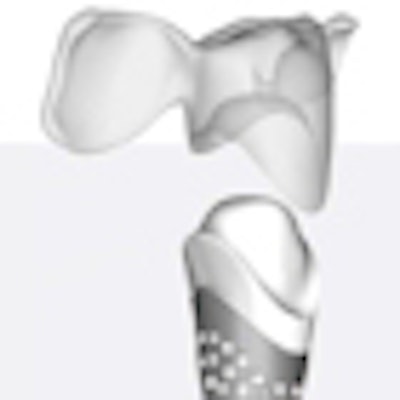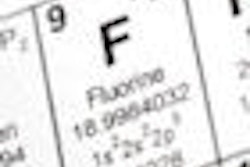
A new dental implant system from Natural Dental Implants has the technology to apply an intuitive concept: replacing a tooth with an implant that is an exact replica of the extracted one.
 The Replicate system creates a fully customized replacement for a natural tooth placed immediately after extraction; it is designed with general dentists in mind. All images courtesy of Natural Dental Implants.
The Replicate system creates a fully customized replacement for a natural tooth placed immediately after extraction; it is designed with general dentists in mind. All images courtesy of Natural Dental Implants.
The company recently launched the Replicate Non-Surgical Tooth Replacement System in the European Union and is awaiting approval from the U.S. Food and Drug Administration to make it available in the U.S.
Designed for use in typical implant cases receiving treatment from both specialists and general dentists, the Replicate system is intended to be a fully customized replacement for a natural tooth placed immediately after extraction, according to the company.
The system utilizes a customized crown with a built-in splint that is immediately bonded to the adjacent teeth. This splinting process provides primary stability during healing that should remain in place for four to six months, according to the company
"We have customized crowns and the technology for customizing the abutment. We're really taking it to the next step and customizing the entire device," Lea Nesbit, CEO of Natural Dental Implants in the U.S., said during an interview with DrBicuspid.com. "The procedure simply requires [the practitioner] to extract the tooth, to prep the adjacent teeth, and then perform the bonding. They don't need a surgical guide, they don't need to have a lot of experience drilling into the bone to place implant screws. All of those are off the table in terms of the procedure."
 Ruedger Rubbert, CEO of Natural Dental Implants and inventor of the Replicate system, as well as its first patient.
Ruedger Rubbert, CEO of Natural Dental Implants and inventor of the Replicate system, as well as its first patient.
In straightforward cases, the system can be highly efficient, according to Ruedger Rubbert, CEO of Natural Dental Implants and inventor of the Replicate system, as well as its first patient. "We do the process in about a week," he explained. "Our process starts with a cone-beam CT image and a digital intraoral impression or traditional silicon impression."
Next, the lab creates a replicate tooth. The extraction and replacement takes place during the second appointment. Beyond that, the patient can return for an optional control visit two weeks after the implant is placed. Six months later, the temporary crown is removed and a definitive one is placed.
"The system was originally designed to be an alternative to three-unit bridges and traditional dental implants," Nesbit noted. "Rather than relying on mechanical retention with screw threads, it uses the adjacent teeth to provide that primary stability. For the patient, they can walk out with an immediate aesthetic result. They have to be careful about what they chew on for a bit, but within a month or so, they have a pretty functional tooth."
Following the Invisalign model
Rubbert described the system as an evolution from a traditional screw and explained that osseointegration of the sandblasted, large-grit, acid-etched (SLA)-type titanium root, combined with the zirconia crown/splint and abutment, enables immediate placement after extraction, mechanical stability, and rapid healing.
 Lea Nesbit, CEO of Natural Dental Implants in the U.S.
Lea Nesbit, CEO of Natural Dental Implants in the U.S.
Rubbert and Nesbit, who worked with a mass customization concept with their previous companies, OraMetrix and Lingualcare, compared their model to that of Invisalign. "They developed a system where they could individualize treatment for each patient," Nesbit explained.
Alex Touchstone, DDS, has been brought into the fold to educate dentists about how the system works. With a background in hosting CAD/CAM lectures and speaking engagements, Dr. Touchstone will help market the system and also teach dentists interested in using the system in continuing education course settings.
"From a clinical perspective, the learning curve is going to be quite moderate," Dr. Touchstone said. "The workflow involves, simply, some diagnostic imaging, impression taking, and then an atraumatic extraction of the tooth along with a bonding protocol for bonding the crown splint in place."
The first cases from Europe have begun to arrive. "The response has been very positive, because it's something that's easy to describe and sell to the patient in terms of treatment alternatives, particularly those who are looking at three-unit bridges," Nesbit said. Part of the appeal is that "it doesn't require the destruction of healthy dentition on the adjacent teeth."
The Replicate system is most suitable for standard, single-tooth cases, the company noted.
"Complex cases where significant bone augmentation is required, where you don't have the right vertical bone height, for example, are better in the hands of the specialists," Rubbert said. "So one element of our clinical education early on with our clinical advisors, and as we learn more over time, is the right indication."



















